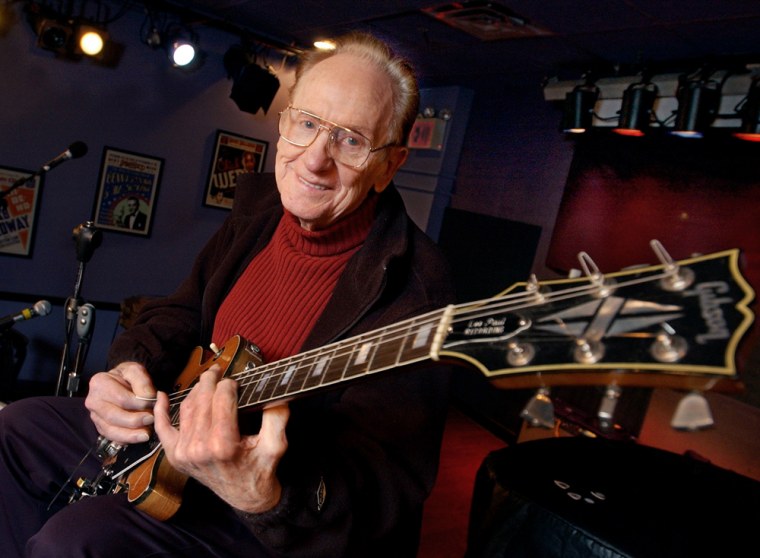The inventors of the modern electric guitar and the frozen food industry are among this year's 13 inductees into the National Inventors Hall of Fame.
Musician Les Paul, already a member of the Rock and Roll Hall of Fame, and Clarence Birdseye, a household name that still appears in kitchen around the country head this year's class. Also on the list are Segway inventor Dean Kamen; Leo Sternbach, the chemist who invented Valium; and Robert Gundlach, a former Xerox Corp. employee who developed the modern photocopier.
The group will be honored at the Akron, Ohio museum during a ceremony May 14.
Kamen, who commercializes his inventions through the DEKA Research and Development Corp. in Manchester, N.H., created a national stir in 2002 with the mysterious unveiling of the Segway Human Transporter. But another Kamen invention, the AutoSyringe, was cited by the Hall of Fame as the reason for the induction. The AutoSyringe is a wearable infusion pump that automatically injects insulin into diabetes sufferers and others who require round-the-clock drug dosages.
Paul, now 89 and still performing, lends his name to a classic electric guitar model sold by Gibson USA since 1952. He was one of America's most famous guitarists in the early 1950s, but spent his free time experimenting with guitar construction and other aspects of sound engineering.
Acoustic guitars have openings to allow sound to escape, but Paul realized that a solid body would maximize the vibrations that cause sustain, critical for electric guitar players. Paul and Gibson, are often credited with the sound of modern guitar-based rock and roll. The Les Paul model sold by Gibson today is essentially the same instrument sold in the 1950s.
Paul is also considered the father of multi-track recordings, which allow musicians to perform at different times and later merge the sounds to produce a single song.
A new generation of music fans came to know Paul in 1998 because of a popular Coors Light commercial, in which a young guitarist struts his stuff and then offers the aged Paul a chance to play. When Paul wows the audience, the young musician asks, "What's your name," to which Paul replies, "It's on your guitar."
Birdseye, who died in 1956, gets credit for fast evening dinners. His innovations allowed high-quality food to be frozen with minimal frost damage. Birds Eye Foods still carries his name.
Other living inductees are C. Donald Bateman, who invented the Ground Proximity Warning System used by airplane pilots to avert crashes, and Alec Jeffreys, who invented genetic fingerprinting used by law enforcement and others in the legal community to obtain DNA evidence.
Posthumous recognition was given to steam locomotive inventor Matthias Baldwin, Kodachrome color film inventor Leopold Mannes, and Garrett Morgan, who invented the gas mask and the traffic signal.
Also on this year's list of inductees:
- Glenn Seaborg, for plutonium isolation. He was also the first person to have an element named after him while he was still alive: seaborgium.
- Jacob Rabinow, for optical character recognition. His invention changed the way the U.S. Post Office did business, making hand-sorting of letters obsolete.
- Selman Waksman, for the drug Streptomycin, which was the first effective treatment of tuberculosis. He also coined the term, "antibiotics."
Inductees are selected by a committee including leaders in scientific and technical fields. The hall has more than 200 members.
Inventors may be nominated by anyone for induction into the Hall of Fame, but they must hold a U.S. patent to be considered, according to the organization. The not-for-profit National Inventors Hall of Fame inducts a new slate of members each year. It was founded in 1973 by the U.S. Patent and Trademark Office and the National Council of Intellectual Property Law Association.
